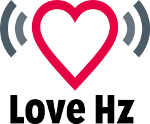Occupy Spectrum
/What is Unlicensed Spectrum?
You might think this sounds like the most boring thing you could possibly blog about but, like plate tectonics, huge shifts are happening in radio spectrum policy all the time and almost nobody notices.
Take Wifi. It's been a success story, but why? Wireless spectrum that was considered junk by many was made available without the need for a licence in the early 2000s. This frequency band (2.4GHz) was opened to Instrumentation, Scientific and Medical (ISM) devices. Into that space came devices operated by individuals, using a protocol called 802.11. End users didn't need a licence to start operating, instead they relied on device manufacturers to stick to the rules. The public need know nothing about licensing and could just open the box and use the equipment.
“The public need know nothing about licensing and could just open the box and use the equipment. ”
The runaway success of Wifi and the ISM bands in general show the potential for unlicensed spectrum. Now, across the world, telecoms regulators are exploring how to share UHF spectrum normally used for TV transmission and radio microphones by using a system called TV Whitespace or Dynamic Spectrum Access. The result would be more unlicensed spectrum.
History has shown us that unlicensed spectrum is popular because it's unlicensed. The barrier to entry is dramatically reduced. History has also shown us that a few powerful organisations such as mobile operators will do anything to get their hands on spectrum. They consider themselves the trusted guardians of the precious radio waves and have very deep pockets. They do not like unlicensed spectrum. Unless it's Wifi, meaning they can offload your pesky low-margin Internet data onto free spectrum, and even now they're busy trying to work out how to charge you for that (Hotspot 2.0).
Dynamic Spectrum Will Fundamentally Change Spectrum Management
Spectrum sharing will completely change the way spectrum is managed. Instead of the typical cycle of 20+ years of adoption and then clearance you'd normally expect from spectrum, you can borrow spectrum off another operator (paid or unpaid) for a matter of days, hours, even minutes or seconds. Many orders of magnitude faster than having a spectrum auction (at least 30 days) without years of planning and bid theory.
A voracious appetite for connectivity has emerged with mobile networks, broadband and to service the Internet of Things. Much of this bandwidth is now expected to be wireless. We can't use the old methods to allocate that, instead make it dynamic. Agile. A Cambrian Explosion of spectrum uses awaits.
Take Action
So what can you do? Occupy spectrum. Start using TV Whitespace as soon as it's available (UK - end of 2015). Show the world how we can use it more effectively.
Nobody would allow an ISM band to be taken up by licensed operators now - there's too big an ecosystem (businesses, hardware and users) based around it. If we can show thriving demand for the unlicensed spectrum in TV Whitespace then there's a good chance the mobile operators won't be able to just buy it up once TV is no longer broadcast over the air (which is sooner rather than later in some countries).
The world is moving in the direction of spectrum sharing. It's been legal in the US for several years, Canada just made it legal this year, Singapore are going through the legislative process. Trials are under way in the Philippines, India, Namibia, South Africa, Kenya, Brazil and Jamaica. The UK is about to make it legal and is leading Europe.
At Love Hz we're proud to be part of the first wave in the UK, showing the EU and the world what's possible. By using Nominet's Whitespace Database we can operate under carefully controlled conditions, avoiding interference.
Let's show them the way.







